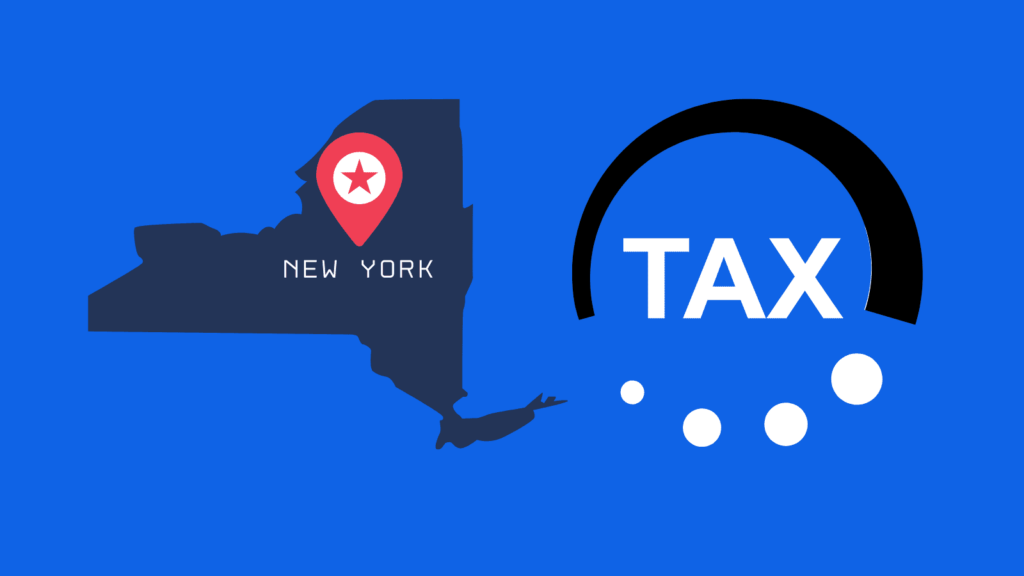Everything You Need to Know About New York’s Estimated Tax for 2022
January 16, 2023

peakreliance
Accounting, Bookkeeping, Taxes
Are you a New York resident looking to stay up to date on your taxes for the year 2022? Estimating and paying New York’s estimated tax can be an intimidating process, but it doesn’t have to be. With the right information and a few helpful tips, you can make sure that your estimated taxes are accurate and paid on time. In this article, we’ll provide everything you need to know about New York’s estimated tax for 2022, so that you can be confident that you’re in compliance with all applicable tax laws. We’ll go over what estimated taxes are, how to calculate them, and the due dates for filing and paying. Knowing this information will help you avoid costly penalties, so read on to learn more!
What are estimated taxes?
Estimated taxes are taxes that a person pays on an estimated basis throughout the year instead of waiting to file a New York tax return and have taxes owed or owing at once. This is done so that the person does not have to pay a huge amount of taxes on April 15 because they made too much money throughout the year and would have to pay a lot of money in one lump sum. If you do not pay estimated taxes you may be subject to penalties. Estimated taxes are due on the 15th of the following month for the current month. For example, if you make $3,000 in June, you would pay $300 in July and another $300 in August.
Who is required to pay estimated taxes in New York?
Estimated taxes are required when a taxpayer anticipates that their income will be on the higher side throughout the year.
You are required to pay estimated taxes if:
- You have income that is not withheld by an employer or someone else
- You have self-employment income
- You have investment income
- You have rental income
- You receive income from a side job
- You receive alimony
- You have income from other sources
- You are serving in the military
How to calculate estimated taxes
There are a few different methods for calculating estimated taxes: The basic method – You can use this method if you do not have any unusual sources of income. For single filers with no dependents and no deductions, the basic method is to take your taxable income and multiply it by 90%. For joint filers, multiply taxable income by 80%. The average method – This method is used for taxpayers who do not have a consistent amount of income and whose income varies each year. The average method is based on the average amount of income received over the last two years. The safe harbor method – This method is used for taxpayers who receive a significant portion of income from sources that are not expected to continue. It uses the lower end of average income from the last two years unless there was a significant change to the taxpayer’s situation.
What are the due dates for filing and paying estimated taxes?
The due dates for filing and paying estimated taxes is on the 15th of the month following the month income was received. For example, if you made $4,000 in July and $3,000 in August, you would pay $300 in September and another $300 in October.
How to pay estimated taxes?
There are a few different ways you can pay estimated taxes. If you have a W-2 from an employer, you can take the taxes out of your paycheck. If you are self-employed and file a quarterly estimated tax return, you can pay estimated taxes with money from your own bank account. If you have a side job, you can pay estimated taxes by writing a check out to the New York State Tax Department. If you are receiving income from other sources, you can send a check to the New York State Tax Department or set up a payment plan. If you receive alimony, you must make estimated payments based on income reported by your spouse. If you are serving in the military, you can request to have your taxes withheld from your paycheck.
How to file estimated taxes?
If you follow the general guidelines for calculating estimated taxes and make sure to pay on time, you can file your estimated taxes online through New York’s Tax Department website. You can also file estimated taxes by mailing a paper form to the Tax Department. You can find the estimated tax forms on the Tax Department’s website. If you file estimated taxes online, you must attach a payment stub to your estimated taxes form. This will ensure that your estimated taxes are processed as timely filed. If you file estimated taxes by mail, be sure to use the correct address for your county. If you owe taxes, the due date is April 15. If you have overpaid, you can apply the overpayment toward next year’s taxes.
Penalties for late payment or filing
Penalties are applied if you do not pay your estimated taxes on time. The penalty is 5% of the amount of the underpayment. There is also a penalty if you file your estimated taxes after the deadline. These penalties are applied per month, so they can add up quickly. If you have trouble paying your estimated taxes or filing them on time, you can speak with an accountant or tax preparer. They can let you know if you qualify for any tax credits or if you can apply for an extension on your estimated taxes.
What deductions can be taken when filing estimated taxes?
There are a few different deductions that can be taken when filing estimated taxes. You can take deductions for child care and child care transportation, health care, health insurance, net interest on your primary residence, net interest on a second home, mortgage insurance, mortgage interest, self-employment taxes, alimony paid, and home equity debt reduction.
What credits can be taken when filing estimated taxes?
There are a few different credits that can be taken when filing estimated taxes. You can take credits for the New York State Residential Energy Tax Credit, the Child and Dependent Care Credit, the New York State School Tax Credit, the New York State Retirement Tax Credit, and the New York State School Tax Credit.
Resources for more information about estimated taxes in New York
Here are a few resources for more information on estimated taxes in New York.
New York State Department of Taxation and Finance – This is the state agency that collects taxes. Their website includes information about estimated taxes, filing taxes, and penalties.
New York State Department of Taxation and Finance Estimated Taxes Page – This page provides a breakdown of how to calculate estimated taxes and the due dates for filing and paying.
The New York State Society of CPAs – This is a professional association for accountants. The website provides information about estimated taxes and filing taxes.
Conclusion
Estimated taxes are taxes that a person pays on an estimated basis throughout the year instead of waiting to file a New York tax return and have taxes owed or owing at once. This is done so that the person does not have to pay a huge amount of taxes on April 15 because they made too much money throughout the year and would have to pay a lot of money in one lump sum. If you do not pay estimated taxes you may be subject to penalties. If you have income that is not withheld by an employer or someone else, you have self-employment income, investment income, rental income, or receive income from a side job, you are required to pay estimated taxes. There are a few different methods for calculating estimated taxes and there are deductions, credits, and penalties that can be taken when filing estimated taxes.
Need help with your estimated taxes in New York? Contact us at +1 (718) 218-5558 or hi@peakreliance.co to learn more about our services and get expert assistance with your tax obligations.
Post Tags :
Estimated Taxes, New York
About Us
Empowering small businesses and individuals with efficient and reliable bookkeeping & tax services.



